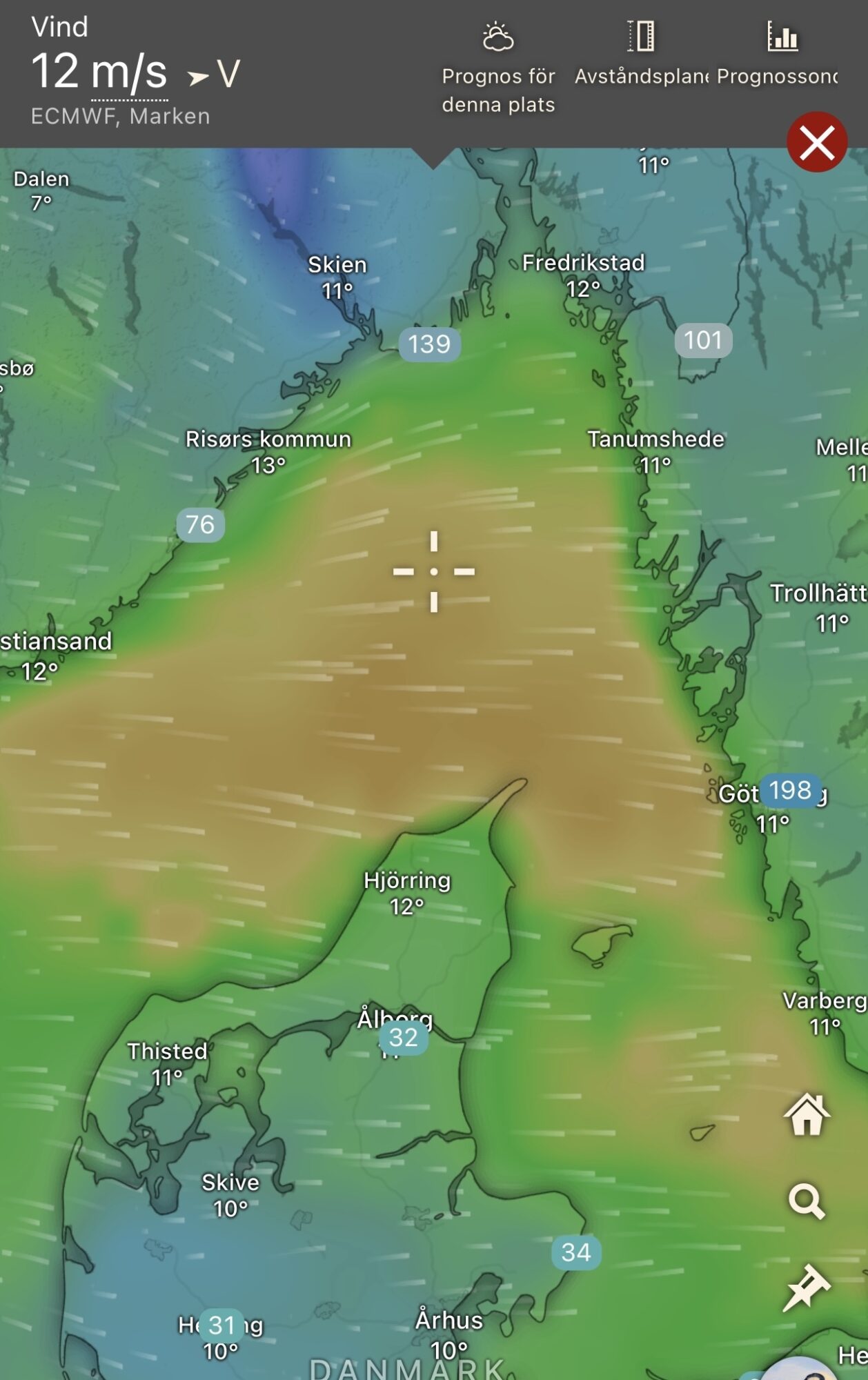Waiting for Calm Seas
The field season has come to an end, though not quite in the way we hoped. It has been one of the windiest seasons I can remember, with weeks spent on standby along the Swedish west coast waiting for weather calm enough to let us go far out to the study site on the edge of the Norwegian Trench in here in Skagerrak. Out there, in depths reaching 700 meters, is the hot spot where we aim to catch and tag Greenland sharks and Sailrays.
Although our tagging boat can handle fairly rough weather, the small recreational fishing boats we collaborate with need almost perfect calm conditions to safely reach and fish these remote areas. Fishing teams from Norway trying to fish in the same region have reported the same frustrations: few opportunities, and very few catches. When the storm Amy swept through a week ago, it felt like nature’s way of closing the season for good.

Constantly checking the weather apps has become part of life. We rarely head out unless the forecast shows at least 36 hours of calm winds below 2-3 m/s. Image © Windy
Still, this year has not been without progress. Collaboration across borders has strengthened. We’ve held productive meetings with colleagues in Norway and Denmark to coordinate tagging efforts and even discussed sharing transmitters when chances arise. We’ve also begun aligning our receiver arrays across the deep-sea area. Data downloads from these receivers’ hints at spatiotemporal variation in the way the Greenland sharks utilise the study sites, providing a piece to the puzzle of how these large and old fish move through the deep Skagerrak.
Now, as autumn sets in, it’s time to reflect and plan ahead. To make the most of next season, we’ll likely have to begin earlier, being standby to act on promising forecasts already in the beginning of April, when calmer weather sometimes offers those rare two-day windows we need. Being “on standby” means having the car packed and the crew prepared to leave within a day’s notice. It’s a challenging way to operate, but the reward – meeting a giant Greenland shark or a Sailray from the deep and collecting data that hopefully will guide their protection for generations to come—more than justifies the logistical challenges.
Some say storms and windier summers are becoming more common, perhaps our new normal in a changing climate. If that’s true, flexibility and collaboration will become even more crucial for small research projects like ours. For now, we’ll keep the tags ready for the next window of calm, hoping that next year the weather gods will be a bit kinder to those of us chasing sharks in the deep.

On site and ready to fish. Moments like this are rare—calm seas and clear skies. Working far offshore in small boats means that once the wind increases, safety quickly becomes a concern, and the long run back to harbour feels even longer. Photo © Gustav Hellström
